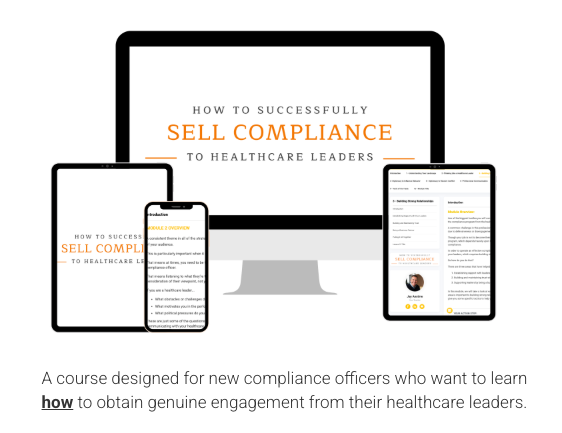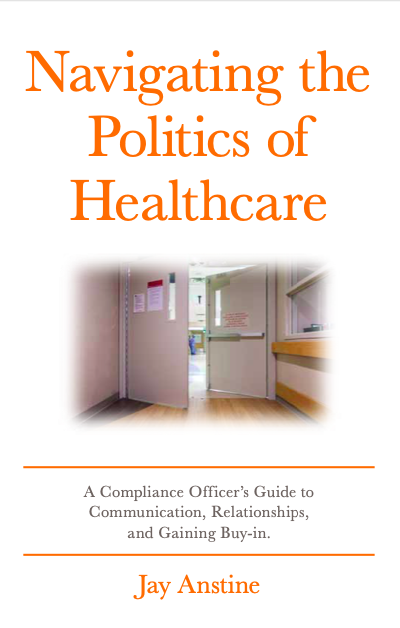If you’ve been in healthcare compliance for any length of time, you’ve likely experienced it—the subtle eye roll when you raise a regulatory concern.
Or, how about a cringy sigh when you mention the word “policy”?
Ever hear comments like “Are you crazy, you want us to do what?” when addressing a new regulatory requirement.
If any of these sound familiar, you’re not alone.
Pushback from operational leaders isn’t just frustrating—it can feel like a downright personal rejection of your expertise. But the reality is, pushback is good for the development of your ideas.
Why?
Because it tests your assumptions—ones that you likely didn’t even know you were making about why they are pushing back.
So how do you handle resistance without losing your credibility?
In this article, I’ll explore just how to do that.
Reframe Pushback as Data—Not Defiance
When healthcare leaders push back, it’s easy to assume they’re being difficult. But often, the resistance actually reveals valuable information about what matters to them—whether it’s priorities, pressures, or competing incentives.
Also, keep in mind that if they are pushing back—at a minimum—that means they’re demonstrating engagement to your compliance program.
And isn’t that what you want from them in the first place?
When it comes to engagement, you have to accept that feedback will include what’s working—and what isn’t—with respect to the compliance initiative you are advancing.
So, how do you maintain a positive perspective in light of pushback?
Instead of reacting defensively—get curious. Ask yourself questions, such as:
“What’s driving this concern?”
“What are they risking by saying ‘yes’ to me?”
“What assumptions could he or she be making about this compliance initiative?”
When you change your mindset to see pushback as data—and not disrespect—your mind automatically shifts from conflict to problem-solving mode.
And that’s the mode where you find a true solution that works.
Regulate Yourself—Before You Respond
Let’s face it, healthcare compliance is emotionally charged work.
First off, you’re often the bearer of bad news. When you layer on the organizational risk involved in our work, combined with the corporate politics of healthcare, well—there my friend, you have a recipe for frustration, stress, and anxiety.
When someone challenges you, your body unbeknownst to you, may respond as if you’re under attack (e.g., tense shoulders, racing thoughts, defensive tone). All completely normal and understandable under the circumstances. Unfortunately, for your career longevity, throwing a fit akin to a toddler just isn’t an option.
Instead, you need to regulate yourself before you respond.
Now, I’m most definitely not a therapist, so I’ll pause and say that you should consult an expert in behavioral health if this is an area that presents a challenge for you. There are endless resources out there with tools that can help improve your ability to stay present and grounded.
What I can say is that if want the tool to be effective— then you have to practice it. Like any skill, practice is the only way to be able to tap into it without having to think about it.
Aside from grounding tools, another way to help regulate yourself is re-centering by internally reminding yourself:
“The focus of the concern isn’t about me, it’s about resolving the issue.”
When you can effectively manage your emotions in a high-stake moment, you send a message to your leaders that you’re someone they can rely on. Over time, this helps earn their trust.
Acknowledge their Concern—Before You Verbalize Yours
When leaders feel unheard, they dig in deeper. One of the quickest ways to defuse tension is to validate their perspective. For example, you could say something like:
“I hear what you’re saying. This regulatory change will definitely have an impact on your department’s workflow. What if we look at this together to see how we can make it manageable for your staff, while still meeting the organization’s regulatory obligations?”
Acknowledging their concern is not about agreeing with their position. Rather, it is placing value in their opinion, while preserving yours. When you take this approach, it puts you in a much better position to maintain the relationship and keep the conversation productive towards a solution.
Follow Up Strategically
As a final measure, circle back with the leader once emotions have settled. From a practical standpoint, this looks like summarizing any agreements from prior discussions, outlining next steps, and confirming mutual understanding with all the parties involved.
This will not only help you overcome pushback, but reinforce your professionalism and keep the momentum on your side towards a workable solution.
Handling Pushback and the Politics of Healthcare
Pushback is part of the political landscape of healthcare that we must navigate on a daily basis. The key to being an effective compliance officer, is knowing when—and how—to read the social cues around you.
For example, it may be that the reason a department director is pushing back is because it doesn’t align with a performance goal promised to a supervisor—or a board. It could also be because of a power struggle between two people that has nothing to do with your initiative.
So pay attention to the political landscape around you. That includes being self-aware to things like how decisions are made in the organization, who has the ability influence the decisions of others, and who gets along with who.
Handling pushback well shows your operational leaders you’re not just a rule enforcer—you’re politically savvy. You understand timing, tone, and influence. You know when to push, when to pause, and when to pivot. In other words, managing pushback effectively is a form of political intelligence. It helps you build the relationships and trust you need in order to get your compliance initiative heard instead of ignored.
Pulling it All Together
Pushback is inevitable—but it’s not a setback. It’s an opportunity to demonstrate emotional intelligence, political awareness, and strategic communication. Overtime, these are traits that will help you gain credibility with your operational leaders.
When you handle resistance with composure and credibility, you don’t just preserve your reputation—you strengthen it. Over time, that’s what turns compliance officers into trusted advisors who can navigate the politics of healthcare with confidence and impact.
So, see—pushback isn’t a threat. It’s actually a good thing that will help you elevate your career.
Are you a new healthcare compliance officer?
Feeling isolated from your healthcare leaders?
Unsure how to get them to care about compliance?
It's not about how much you know.
It's about how you communicate what you know.
That’s exactly why I created How to Successfully Sell Compliance to Healthcare Leaders.
𝐘𝐨𝐮𝐫 𝐫𝐞𝐠𝐢𝐬𝐭𝐫𝐚𝐭𝐢𝐨𝐧 𝐢𝐧𝐜𝐥𝐮𝐝𝐞𝐬:
The complete interpersonal communication framework & tools
Lifetime access to the course materials
Personalized instructor support
Access to an exclusive student community
Self-study CEU credits available






































